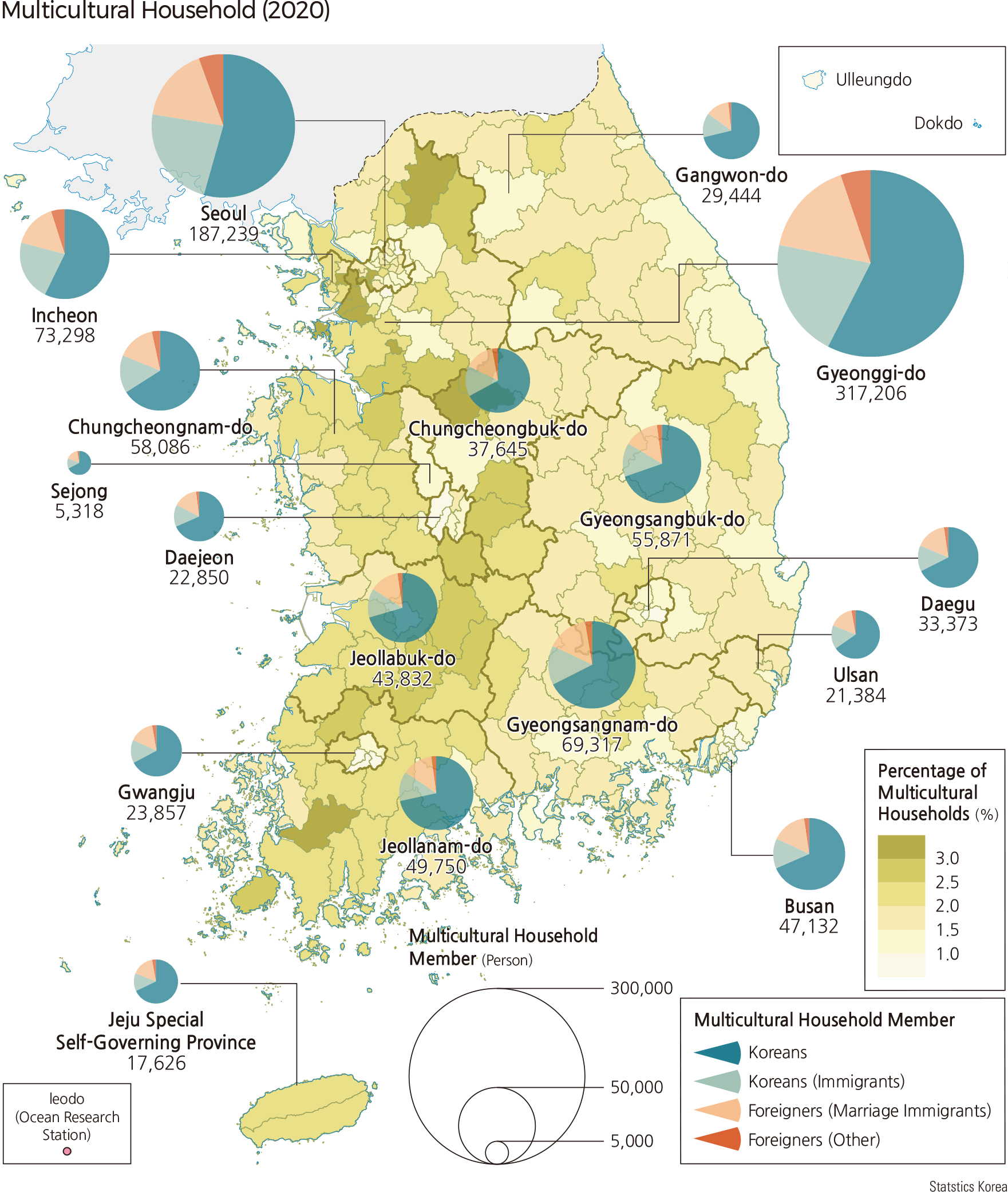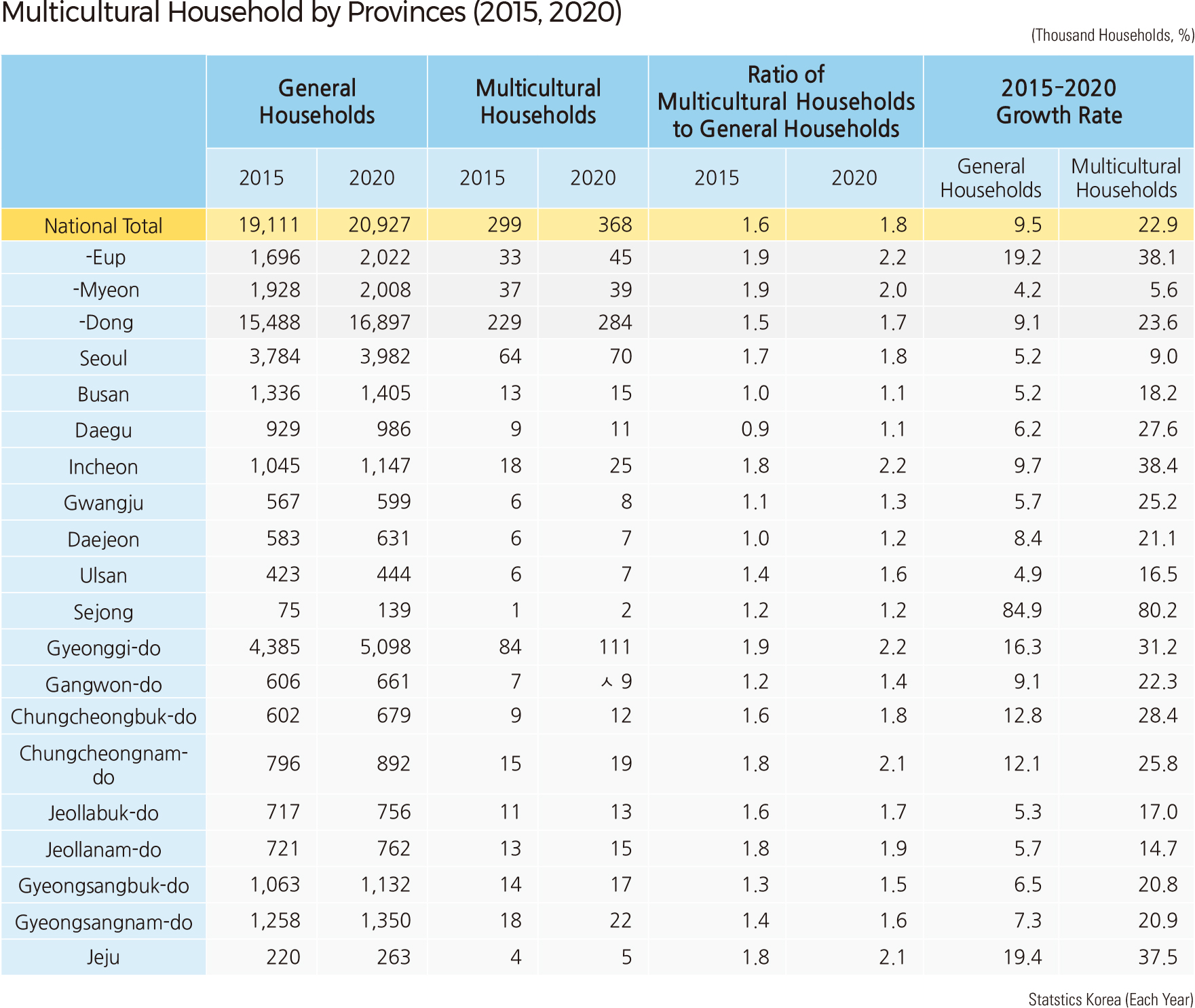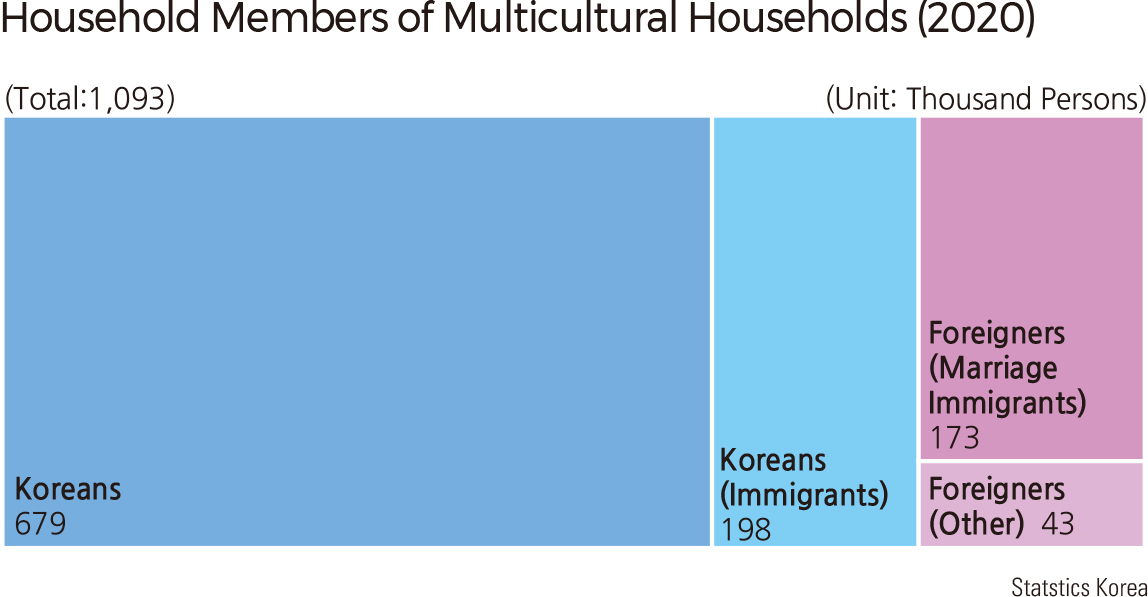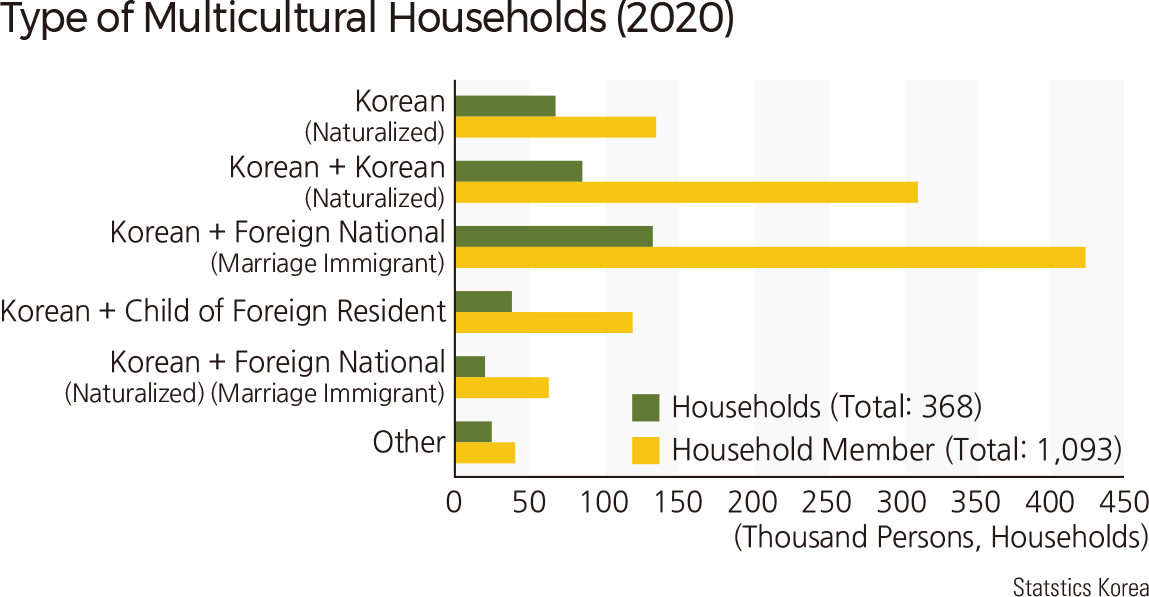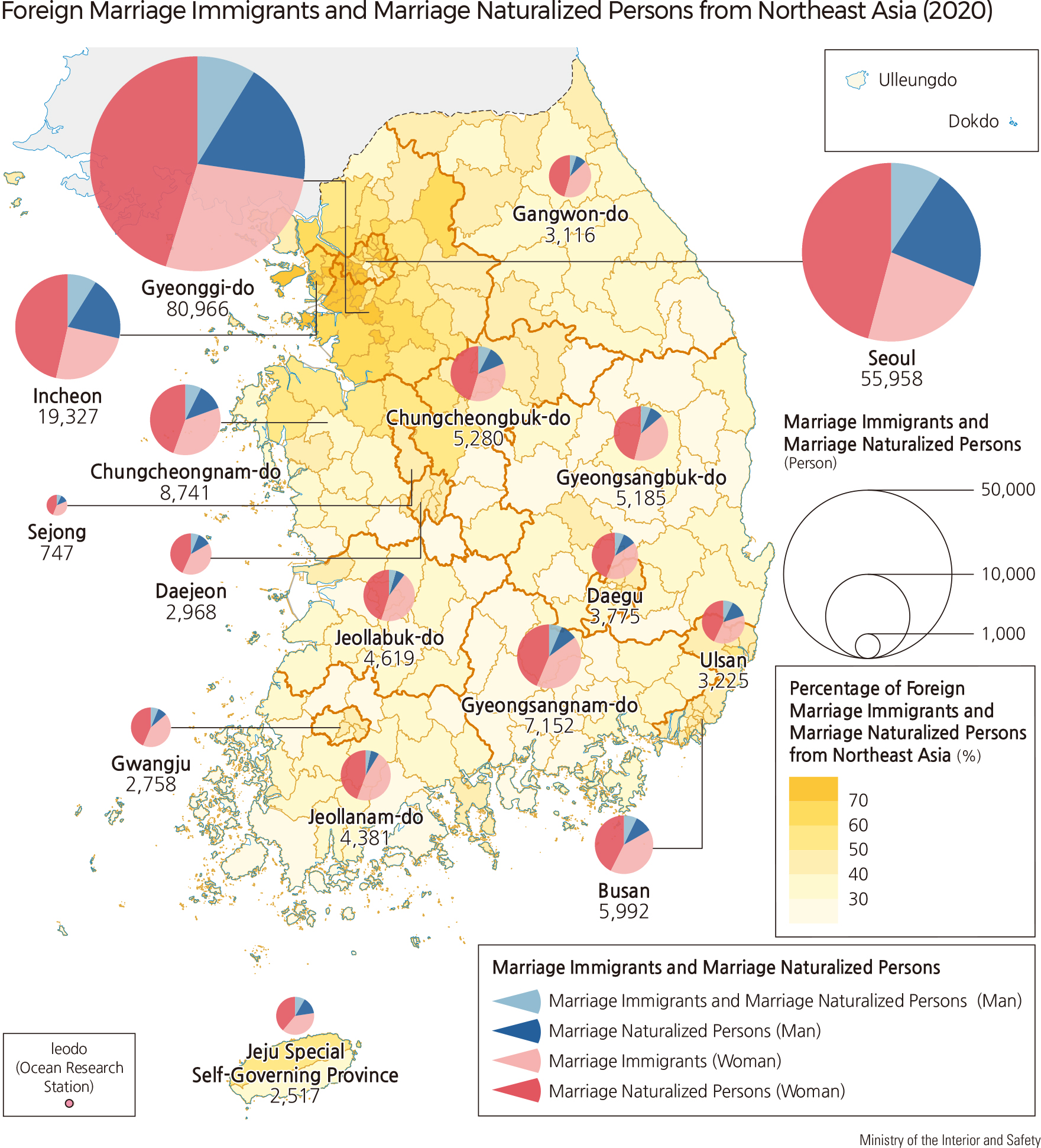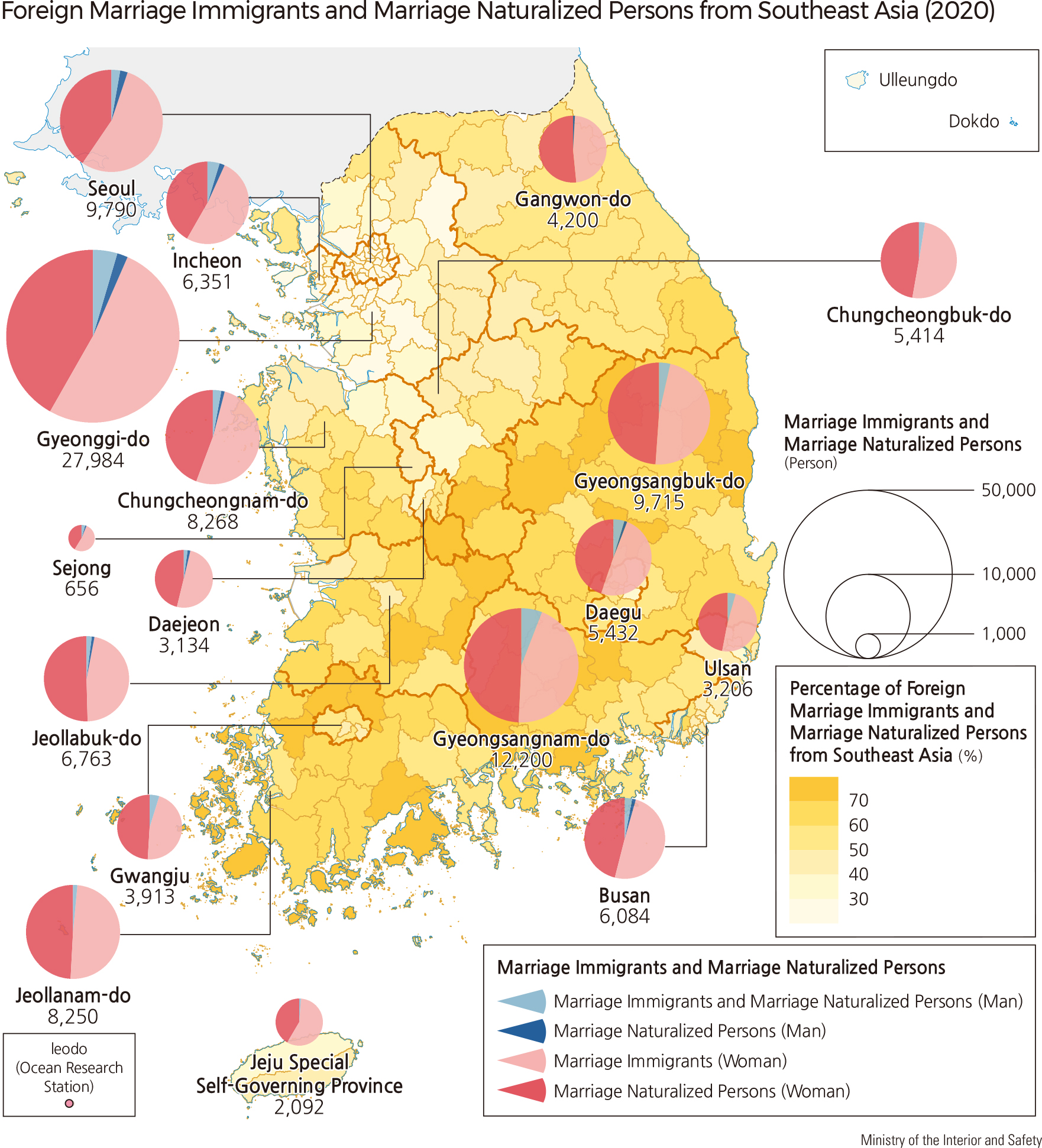English III 2021
Multicultural households are defined as households consisting of naturalized foreign immigrants or marriage immigrants and their children. Multicultural households are different from foreign households, which consist only of foreigners. As of 2020, there were 370 thousand multicultural households, accounting for 1.8% of general households. Compared to 2015, the number of multicultural families increased by 22.9% in 2020, and the rate of increase was 2.4 times that of general households. Furthermore, 56% of multicultural households are located in the Seoul Metropolitan Area, indicating that multicultural households are also concentrated in the Seoul Metropolitan Area. The -si/-gun areas where the ratio of multicultural households is 3% or higher are Guro-gu, Geumcheon-gu, and Yeongdeungpo-gu in Seoul, Ansan-si, Siheung-si, Osan-si, Bucheon-si, Pocheon-si in Gyeonggi-do, Bupyeong-gu in Incheon, Eumseong-gun and Jincheon-gun in Chungcheongbuk-do, and Yeongam-gun in Jeollanam-do. The ratio of multicultural households is high in the Seoul Metropolitan Area and in the Chungcheong region, where many foreigners live. The ratio of multicultural households is also high in the rural areas of the Chungcheong and Honam regions due to the influence of international marriage. There are 1.09 million multicultural household members, of which 680 thousand are Koreans (including births), 200 thousand naturalized Koreans, 170 thousand marriage immigrants, and 40 thousand foreigners. Areas with a high proportion of foreigners among multicultural household members are the Seoul Metropolitan Area, including Seoul, Incheon, and Gyeonggi-do. According to the composition of multicultural households, 220 thousand households (59%) are households of a Korean national and a naturalized foreign resident by marriage or households of a Korean national and a marriage immigrant. The main reason for the formation of multicultural households is marriage. However, the spatial distribution of naturalized foreign residents by marriage and marriage immigrants differs depending on their country of origin. For example, those from Northeast Asia are mainly distributed in the Seoul Metropolitan Area, while those from Southeast Asia are distributed in rural areas of other provinces.
|
